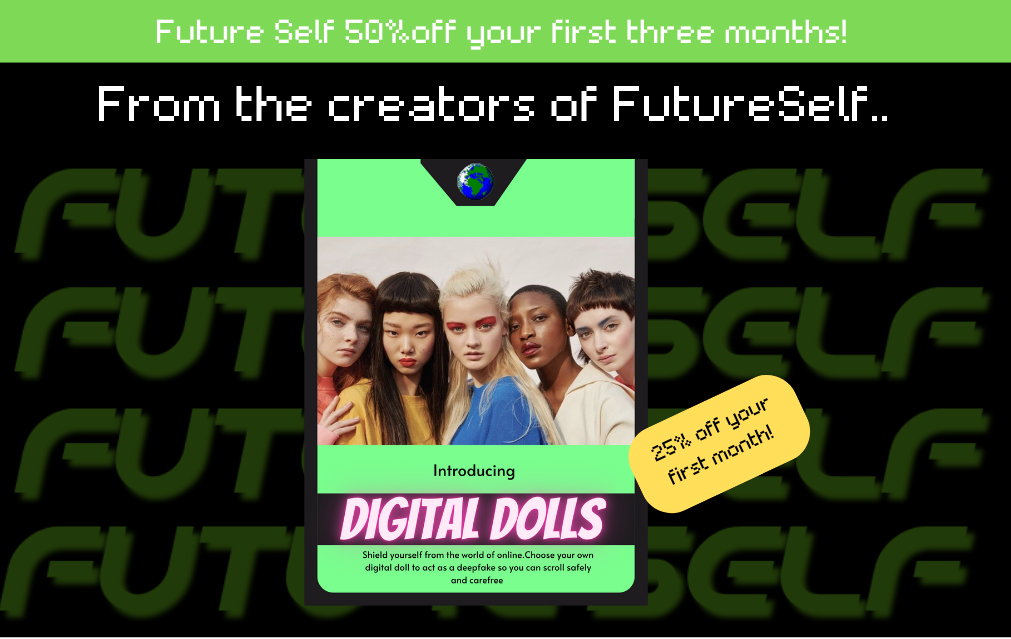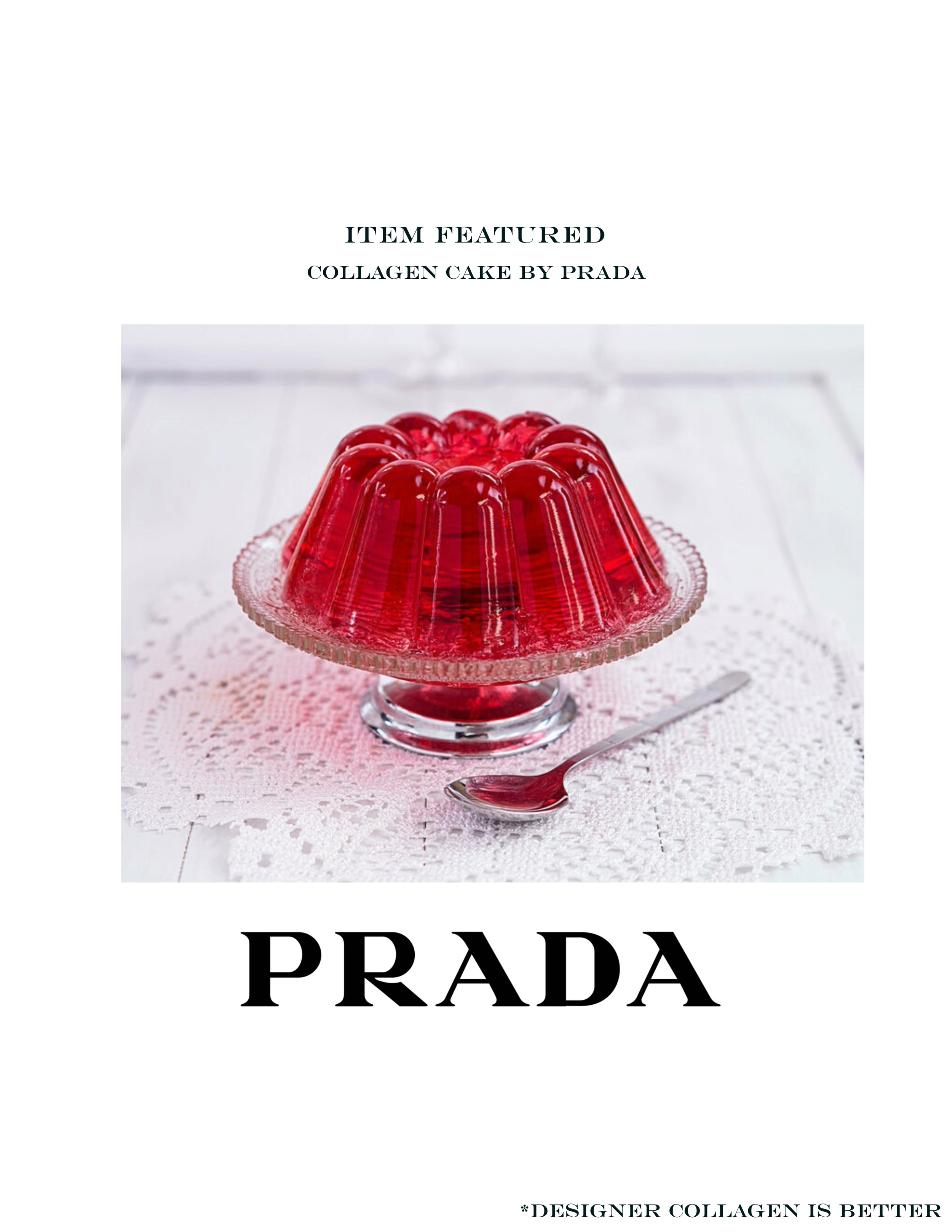Future Self
Advisor
Comittee
Role
Lead,Concept Development , Design Researcher, Product Design
Tools
Adobe Indesign, Adobe Photoshop, Figma, Canva, Capcut
Year
September 2022 - December 2024
Collaborators
Lindsay Thomaston ( Writer and Photographer)
Brianna Brown (Writer)
For my Masters Project I developed a design fiction artifact with the Creating Ethics Infrastructures Lab at Georgia Tech that utilizes world building to create a tangible prototype meant to prompt reflection and discussion from participants on topics related to current emerging technologies (AI) and the socio political factors of our rapidly changing digital landscape. The artifact is a magazine for a fictional online subscription service called “Future Self” - a service that promises it’s users help in achieving their ideal selves (both online and in real life) in exchange for large amounts of personal data. Through the magazine I explored possible implications for the future of data privacy, AI, and consumerist culture. Each artifact presented in the magazine is meant to prompt reflection on the related topics and our current relationship with technology as a whole. The magazine was used as a prompt for multiple recruitment events and for 11 user interviews. The entire project spanned from conception to full development spanned the course of two years.
Read the full magazine here!
Future Self
The Project
Future Self is a lifestyle subscription service created by Future Self Industries that promises to help users achieve their “ideal selves.” The service is targeted towards individuals between the ages of 18 to 30 and places emphasis on being able to help users navigate the often times confusing stages of early adulthood. For $19.99 a month, users are given personalized recommendations for products that will help them achieve their goals. First time subscribers can also look forward to an automatic signup to Future Self Magazine. The magazine is limited to customers of the service - making it cult status item among certain fashion focused internet groups. Through advertisements and articles, I familiarize readers with “Future Self” and the alternative world it inhabits, while also speculating on the implications of current emerging technologies and our relationship with data privacy. Topics covered in “Future Self Magazine” include: Data Privacy, AI data collection, consumerism, identity, virtual personas, surveillance capitalism, deepfakes, AR products, and media influences.
Motivation
Understanding what young adults think about data privacy and current emerging technologies.
Challenge
How can we use design to present multiple complex topics in a clear comprehensible way that engages critical thinking and discussion?
Goals
Create a tangible prototype for a fictional product that appeals to young adults with different elements focusing on: data privacy and current emerging technologies.
Process
Online Identity and Virtual Persona
online consumerism and Marketing
Along with a literature review; I analyzed trends on several popular social media apps and how users engaged with content that marketed these trends. From this I identified several popular businesses that served as inspiration for the creative direction for the project. A brief competitor analysis was also done to better inform the final prototype. Once the prototype was completed I conducted eleven user interviews to get feedback.
I used Design Fiction as my methodology due to its multi-disciplinary approach to design thinking and its focus on creating tangible prototypes to prompt discussion around possible futures. With how large the scope of the project was this methodology allowed for it to come together in a linear thought provoking way.
AI and Emerging Technologies
Why design Fiction?
Research
A lit review of over 50 papers was done to analyze topics for the project . These areas include:
Data Privacy and Surveillance

Design
Key Design elements for the project included:
Y2K
to appeal to Gen Z
to incorporate design into the subject material by using a style prominent during the dot com era
To emphasis the technology presented.
Humor
To compliment the over the top design choices
to aid in communicating the subject matter to readers
to stress its fictional nature.
World Building
To immerse participants in the subject matter
to better inform the design of the artifact
to help in participant recruitment
Branding and World Building
I had to decide what type of company I was creating and what some key characteristics of branding for Future Self would be. I analyzed several companies popular with young adults, such as DollsKills and Heaven by Marc Jacobs, to study both how they communicate with their audience and how they built such a loyal following. I found that Dollskill emphasizes a casual but confident and humorous brand voice and Heaven creates a sense of exclusivity among buyers by limiting its product drops and collaborating with popular musicians and artists.
I decided to emphasize these two traits as core elements of “Future Self’s” brand personality. This is kept consistent throughout the project and helped emphasized the final prototypes believability.
Wording is intentionally kept playful and thought provoking in most advertisements.
When addressing users directly language is kept friendly, playful , and humorous to foster a sense of intimacy and connect with their audience.
The overall content and graphics are edgy and futuristic. Borrowing heavily from the retrofuturism of Y2K.
First Prototype
Plans were initially made for a prototype of the Future Self subscription service to be made and presented to interview participants. The structure of the website was planned out and a user persona was created. However, after reviewing the design material and getting early user feedback the choice was made to instead design a more tangible experience in the form of a magazine.
The original user persona was for a young woman named Hazel who wanted help with navigating her mid twenties and with figuring out what she wanted for herself in the future.
Another central feature for the platform was an “item guide” page that gave users a central hub to shop for recommended products. This feature would also implement AI driven hybrid recommendation system to give users accurate recommendations and predict products their future selves would also enjoy.
The design of the website emphasized integration of user data to personalize the experience. Preliminary concepts included a central dashboard for users to connect email and social media apps to.
While this iteration was ultimately discarded, designing the system for the subscription service helped better inform the final artifact.
Final Product
The decision to create a magazine was based off of survey feedback on early design work. An online survey was done with 9 participants in which all gave positive feedback on work that emulated advertisements found in traditional print media. Additionally, the print materials added to the credibility of the project and were successful as marketing materials for recruiting participants for the user study portion.
Magazine Layout
The magazine is made up of 52 pages primarily composed of advertisements and articles.
Singular topics (such as AI)
are addressed through the
design of advertisements.
You can read the full magazine here.
Articles were written and kept satirical to help emphasize the projects fictional nature and aid in communicating the material.

User Study
After the completion of “Future Self Magazine,” I recruited eleven individuals for a user study to get feedback on the magazine as well as to gather insights into their thoughts on the topics presented. Participants were given a copy of the magazine to read through and were encouraged to voice any thoughts, opinions, or questions out loud. Afterwards I conducted an interview with participants to get their thoughts on the project.
Common opinions from participants during the interviews included a general distrust of AI, concerns over real world ramifications of data breach’s , and concerns over what their data is being used for.
Participants praised the Y2K styled graphics and the use of satire in the project. The decision to create a tangible magazine was also highly praised among participants. Some participants however were unfamiliar with the use of certain terminology, while others expressed a desire for certain products to either be expanded on or for their to have been a website along with the magazine for them to interact with.
Discussion
Through creating “Future Self,” I explored how design and world building can be used to present complex topics and imagining possible usages for new technologies. The process of creating a fictitious brand and designing realistic products for it was also an informative and rewarding experience.
Based on feedback future work would include creating a developed prototype of the “Future Self,” website and expanding on other products the company offers. Additionally, the structure of “Future Self",” allows for design collaboration with others interested in creating experimental artifacts.


























